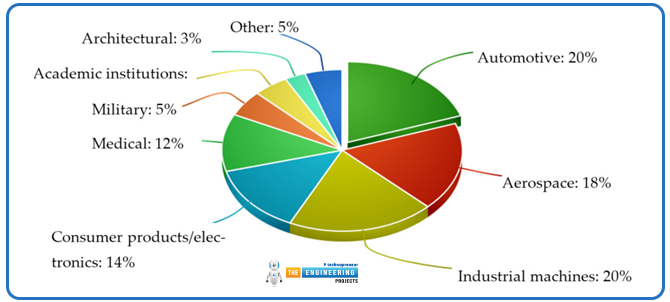
I hope you are doing well and exploring new things daily. Today's topic is various applications of Metal 3D Printing. This is a new state-of-the-art form of additive manufacturing- metal 3D printing. Hence, the objects will be created by building layers directly from digital models. This means unmatched design flexibility - geometries in areas that traditional means of manufacture could not quite accomplish and would have structures of minimum weight achievable thus creating the most. This does not waste as much material, so this might be an environmentally friendly process.
Aerospace, health care, automobile, and construction industries have implemented metal 3D printing for producing customized, high-performance components of exceptional precision. Applications range from intricate medical implants and aerospace parts to automotive prototypes and architectural elements.
Developments in metal alloy and composite material, as well as hybrid manufacturing systems, such as all metal 3D printing systems, lead to increased applicability of metal additive manufacturing. Technological innovations will play a critical role in answering the most complex industrial challenges, stimulating innovation, and defining the future of manufacturing.

This article will look into the extensive applications of metal 3D printing, its advantages, and its impacts on various sectors.
What is Metal 3D Printing?
It is a kind of metal printing that creates very complex metal parts layer by layer through additive manufacturing techniques. Starting with a digital 3D model, the process involves depositing or fusing metal material like powders or filaments by using heat sources such as lasers, electron beams, or binders.
With this technology, it is easy to create more intricate designs while not wasting much of the material in production; besides, its products can be fully customized. Highly popular in aerospace, healthcare, automobiles, and even energy sectors as a production methodology for lightweight high-performance, resistant parts, transformative technology is remolding the fabric of manufacturing towards innovative solutions in faster production cycles.
Applications:

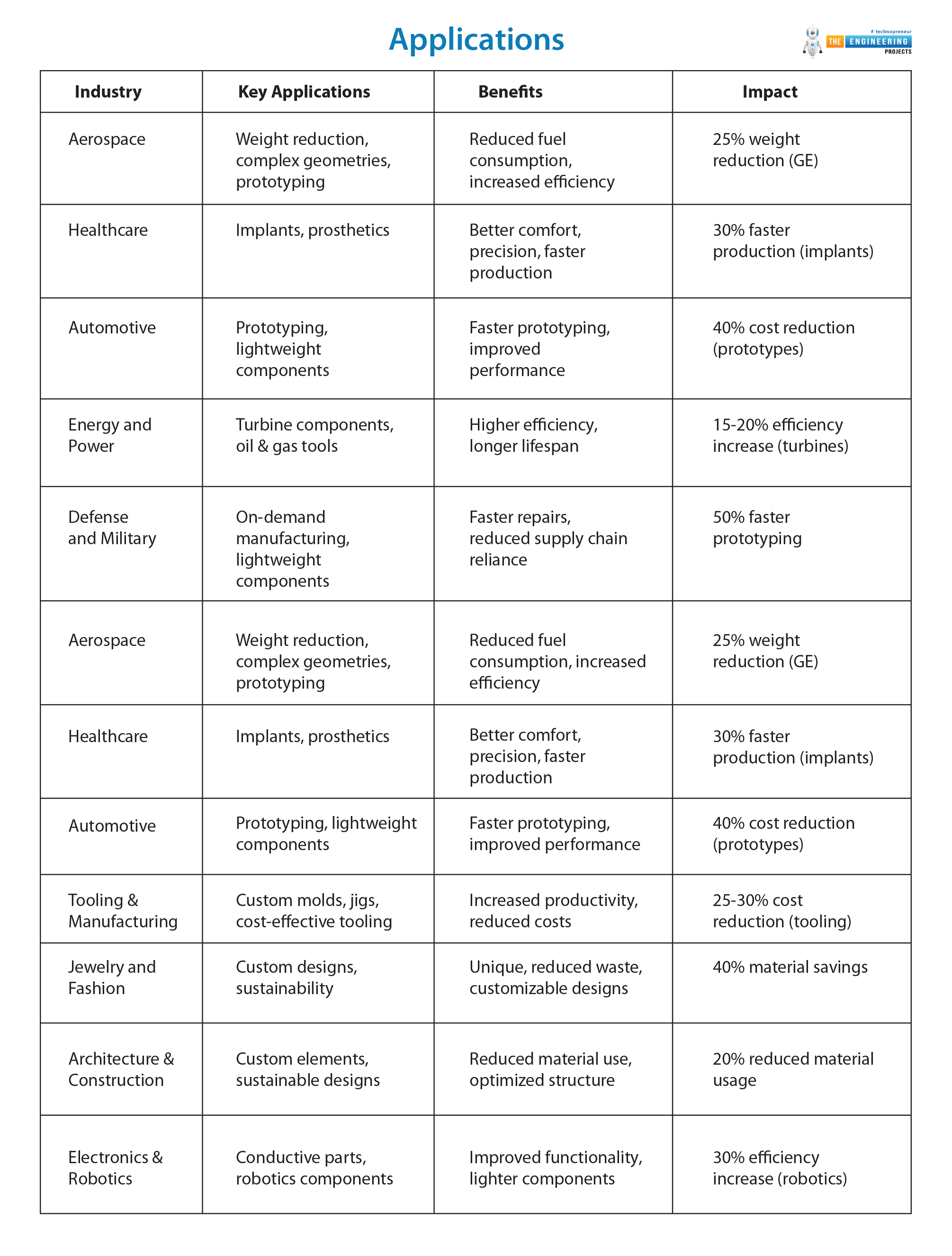
Industry |
Key Applications |
Benefits |
Impact |
|---|---|---|---|
Aerospace |
Weight reduction, complex geometries, prototyping |
Reduced fuel consumption, increased efficiency |
25% weight reduction (GE) |
Healthcare |
Implants, prosthetics |
Better comfort, precision, faster production |
30% faster production (implants) |
Automotive |
Prototyping, lightweight components |
Faster prototyping, improved performance |
40% cost reduction (prototypes) |
Energy and Power |
Turbine components, oil & gas tools |
Higher efficiency, longer lifespan |
15-20% efficiency increase (turbines) |
Defense and Military |
On-demand manufacturing, lightweight components |
Faster repairs, reduced supply chain reliance |
50% faster prototyping |
Tooling & Manufacturing |
Custom molds, jigs, cost-effective tooling |
Increased productivity, reduced costs |
25-30% cost reduction (tooling) |
Jewelry and Fashion |
Custom designs, sustainability |
Unique, reduced waste, customizable designs |
40% material savings |
Architecture & Construction |
Custom elements, sustainable designs |
Reduced material use, optimized structure |
20% reduced material usage |
Electronics & Robotics |
Conductive parts, robotics components |
Improved functionality, lighter components |
30% efficiency increase (robotics) |
1. Aeronautics and Aerospace:
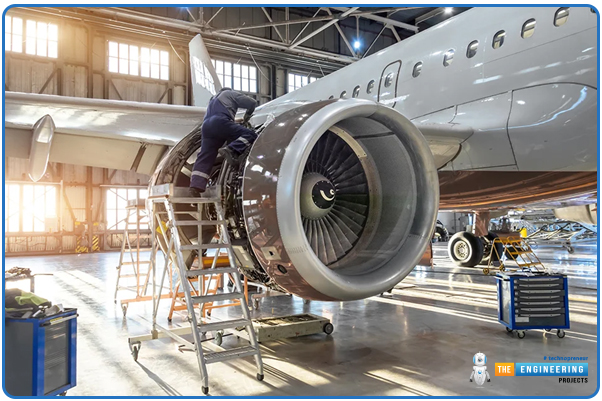
Weight Reduction and Fuel Efficiency:
Metal 3D printing, companies in this sector are front runners in this process because their light yet durable products can offer reduced weight means the aircraft carries lesser weight with an increased fuel economy, lower exhausts, and lesser operating expense. For instance:
GE Aviation builds its LEAP engine nozzles using the Selective Laser Melting Process (SLM), which gave them a saving of 25% of their original weight.
Airbus uses 3D-printed brackets and other structural parts in its aircraft, saving weight without any loss to the overall structural integrity.
Complex Geometries and Functionality:
With metal 3D printing, intricate geometries such as turbine blades that contain internal cooling channels or duct systems that ensure optimal airflow can be created easily. In general, traditional manufacturing methods are challenged by such complexities, whereas 3D printing makes them easily feasible.
Rapid Prototyping and Customization:
Prototyping new designs in the aerospace industry is expensive and time-consuming. Metal 3D printing accelerates this process, reducing lead times and costs. Moreover, components can be customized for specific applications, such as parts tailored for individual spacecraft.
2. Healthcare and Medical Applications:

Patient-Specific Implants:
Producing patient-specific implants as well as prosthetics, metal 3D printing offers benefits in comfort as well as functionality. Some of the popular material includes titanium because it is biocompatible, corrosion-resistant, and lightweight. Some of the common examples include:
Skull structure-based personal cranioplasty plates.
Custom hip and knee replacements with precise fitting.
Dental use:
In dentistry, metal 3D printing offers accurate and rapid crowns, bridges, and orthodontic parts with the technology enabling such precision accuracy that the components fit perfectly. Thus, the dentistry provided brings about minimal to no patient discomfort and pain.
Surgical Instruments:
With the technology, 3D printing, a lightweight and ergonomic surgical instrument, that can be sterilized for use was produced using metal printing. These instruments can be customized for specific procedures, thus enhancing surgical accuracy and reducing operating time.
3. Automotive Industry:
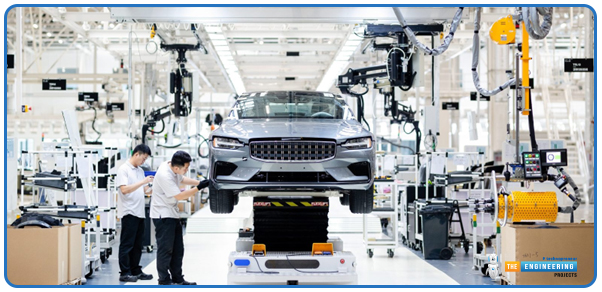
Prototyping and Product Development:
Car makers use metal 3D printing to make rapid prototypes so that engineers can quickly test and iterate designs. For example:
Ford has used 3D-printed parts in the development of new engines and chassis.
BMW uses metal 3D printing to prototype complex engine components.
Lightweight Components for Performance:
Lightweight 3D-printed metal components provide a huge performance advantage for high-performance vehicles. For example:
Bugatti designed a titanium brake caliper that is printed through 3D printing which can provide such high strength along with reduced weight.
Additive manufacturing is used for optimizing exhaust systems and suspension parts so that fuel consumption and performance are reduced.
Custom and Legacy Parts:
Metal 3D printing resolves the challenge of finding hard-to-find or unavailable components for antique and specialty cars. It will enable manufacturers to create on-demand replacement parts using digitized designs, which in turn minimizes cost and time spent.
4. Energy and Power Generation:
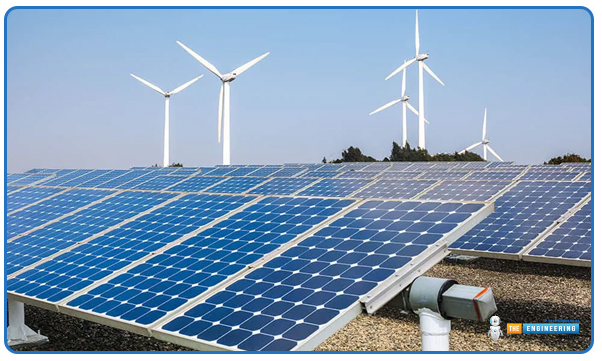
Turbine Components:
The energy sector requires extreme temperature and pressure tolerance parts, and metal 3D printing fulfills that demand by generating:
Optimized cooling channels of gas turbine blades that reduce wear and increase efficiency.
Lightweight yet stronger wind turbine components to achieve higher performances.
Oil and Gas Applications:
Customized tools for drilling, explorations, and extraction, among others, use metal 3D printing, reducing downtime as well as giving the equipment a much longer life span.
Sustainability Initiatives:
Metal 3D printing encourages sustainability in the energy sector through a reduction in material waste by providing a faster route to efficient components.
5. Defense and Military:
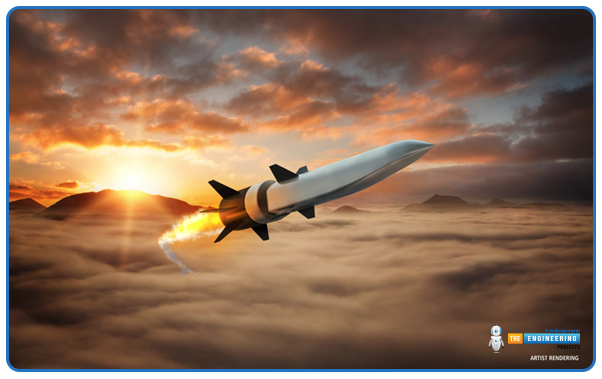
On-Demand Manufacturing:
The production of replacement parts on-site is priceless in military operations. Metal 3D printing allows for decentralized manufacturing, thus cutting down on supply chain dependencies and ensuring operational readiness.
Lightweight and Durable Components:
Drones, armor, and weapon components are manufactured using metal 3D printing. These parts are lightweight, durable, and designed according to specific mission requirements.
Prototyping Advanced Technologies:
Defense organizations use additive manufacturing to speed up the quick prototyping and testing of sophisticated technologies, pushing forward the development process of cutting-edge systems.
6. Tooling and Manufacturing:
Custom Molds and Dies:
Metal-based 3D printing technology enables the rapid creation of high-precision, conformal-cooled injection molds and dies. This offers the potential of more efficient production time with reduced cycle times. Precision jigs and fixtures
Manufacturing lines benefit from customized jigs and fixtures that help increase the precision of assembly and minimize errors. The tools are designed to perform specific tasks, which generally increases productivity.
Cost-Effective Tooling:
Compared to traditional methods, metal 3D printing has significantly reduced the cost of tooling, especially in low-volume production or highly specialized tools.
6. Tooling and Manufacturing:
Custom Molds and Dies:
Metal 3D printing, injection molds, and dies, by having conformal cooling channels enhance production efficiency and reduce the time of the cycle. High-quality tooling with precision is derived from additive manufacturing.
Precision Jigs and Fixtures:
Manufacturing lines can harness customized jigs and fixtures that enhance assembly precision and reduce errors. The tools are fitted and dedicated to specific tasks which lead to the maximization of productivity.
Cost-Effective Tooling:
For such a low volume of output or unique tools, 3D metal saving is different from the tooling cost as seen in conventional procedures.
7. Jewelry and Fashion:

Detailed and Customized Designs:
Metal 3D printing allows designers to create jewelry items that would not be possible at all with the most conventional methods available. This kind of technology affords a person-centered approach because it offers very unique designs in line with everybody's preference.
Efficiency and Sustainability:
The output material is minimal since metal 3D printing avoids much material wastage. The process allows fashion designers to create new shapes and materials, opening a wider scope for creativity.
8. Architecture and Construction:
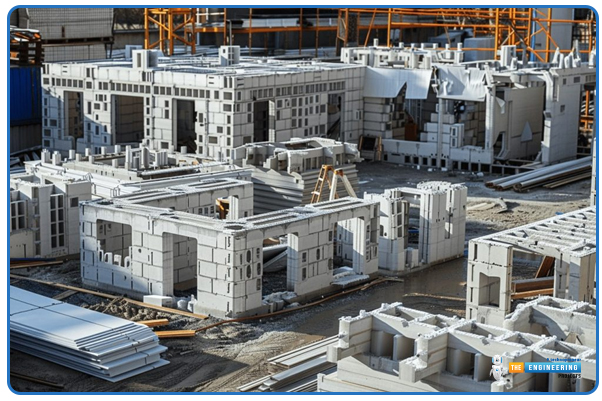
Custom Structural Elements:
Innovative architectural designs, especially in connectors and brackets, apply metal 3D printing to create custom structural elements optimized for strength and efficiency.
Artistic and Decorative Elements:
Architects and artists create unique one-time sculptures, facades, and ornaments by using metal 3D printing. The approach does complex designs without manufacturing any waste.
Sustainable Construction:
Lightweight structures and efficient ones that would be created through metal 3D printing minimize material use and transport prices during sustainable construction.
9. Electronics and Robotics:
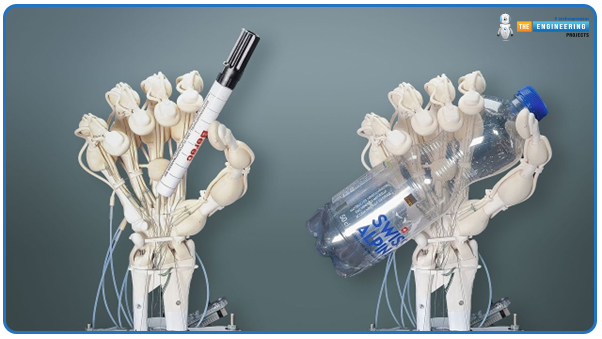
Conductive Components:
Metal 3D printing is used extensively in the manufacture of conductive parts in electronic devices, including antennas, heat sinks, and circuit boards.
Robotics:
Lightweight yet high-strength components for the robotic system are manufactured through 3D printing. These components enhance the functionality, agility, and efficiency of the robots.
Emerging Applications and Future Prospects:
Space Exploration:
In space exploration, metal 3D printing saves the costs of being able to have on-demand part production in space, which reduces the payload requirements of the mission and accommodates mission flexibility.
Medical:
The future medicine application includes bio-printing of metal-based scaffolds and advanced implants, integrating sensors.
Hybrid Manufacturing:
New applications will become available by marrying traditional manufacturing methods with metal 3D printing for hybrid component development with extraordinary properties.
AI and Machine Learning:
With its optimized 3D printing, artificial intelligence capabilities, efficiency, as well as material usage concerning production output are optimized.
Challenges and Limitations:
Despite this, some challenges also metallic 3D printing faces:
High Costs: The equipment and materials are still costly, making them unattainable to small businesses.
Material Constraints: The number of metals that can be 3D printed is growing.
Post-Processing: More steps are sometimes necessary to achieve a good surface finish and mechanical properties.
Advantages of Metal 3D Printing:
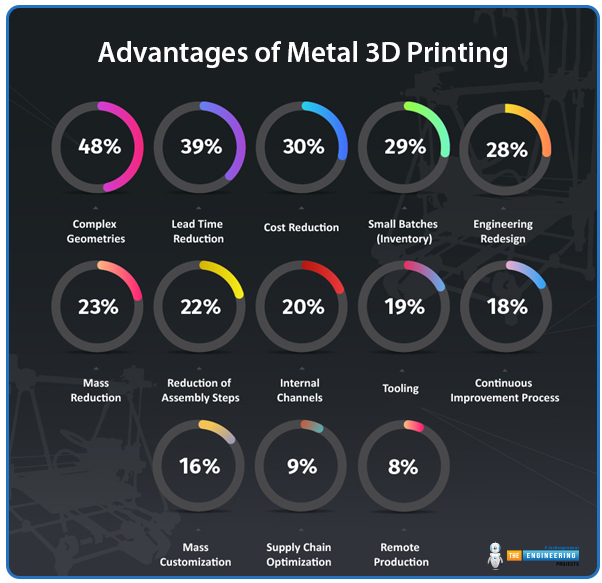
Here are the benefits of metal 3D printing in a nutshell:
Complex Geometries: Complex designs with complex inner structures that cannot be easily manufactured or are simply impossible in traditional manufacturing.
Material Efficiency: Material is used precisely to print the part. No waste pis produced and therefore, lesser costs.
Customization: Makes very customized components such as medical implants, and aerospace parts possible.
Rapid Prototyping: The process is hastened because it enables rapid production of functional prototypes for designing and developing a product.
Lightweight Designs: Lightweight parts with optimal strength can be easily designed for applications in the aerospace and automotive industries.
Reduced Tooling: There is no requirement for specialized tooling or molds, thus reducing upfront costs for small production runs.
On-Demand Manufacturing: It enables just-in-time production, which helps reduce the costs of inventory and offers flexibility in supply chains.
Superior Performance: Manufactures parts with better mechanical properties, such as increased strength or thermal resistance, by using advanced metal alloys.
Eco-Friendly: Saves energy and promotes sustainability by recycling unused metal powder. Hybrid Integration: It integrates with traditional methods to achieve both complex designs and superior surface finishes.
Metal 3D printing has transformative benefits for industries and is a vital technology in modern manufacturing.
Conclusion:
Metal 3D printing is transforming industries because of its capacity to produce very complex, lightweight, and highly customized parts with outstanding efficiency. Material waste reduction, the acceleration of prototyping, and the creation of complex geometries are great advantages in fields like aerospace, healthcare, automotive, and energy. Rapid production means on-demand cost-effective solutions that are greatly appreciated in such fields as industries for high-performance parts, for instance, turbine blades or medical implants.
Despite the challenges involved in this technology, such as high costs, material limitations, and post-processing issues, ongoing developments in materials and processes are expected to overcome these problems. Metal 3D printing is changing traditional manufacturing methods because of its ability to create stronger, stronger parts than ever before. Therefore, rapid development in technology, it is going to transform the future of production in numerous sectors towards sustainability and also propel the next industrial revolution.



